Granada and Alhambra
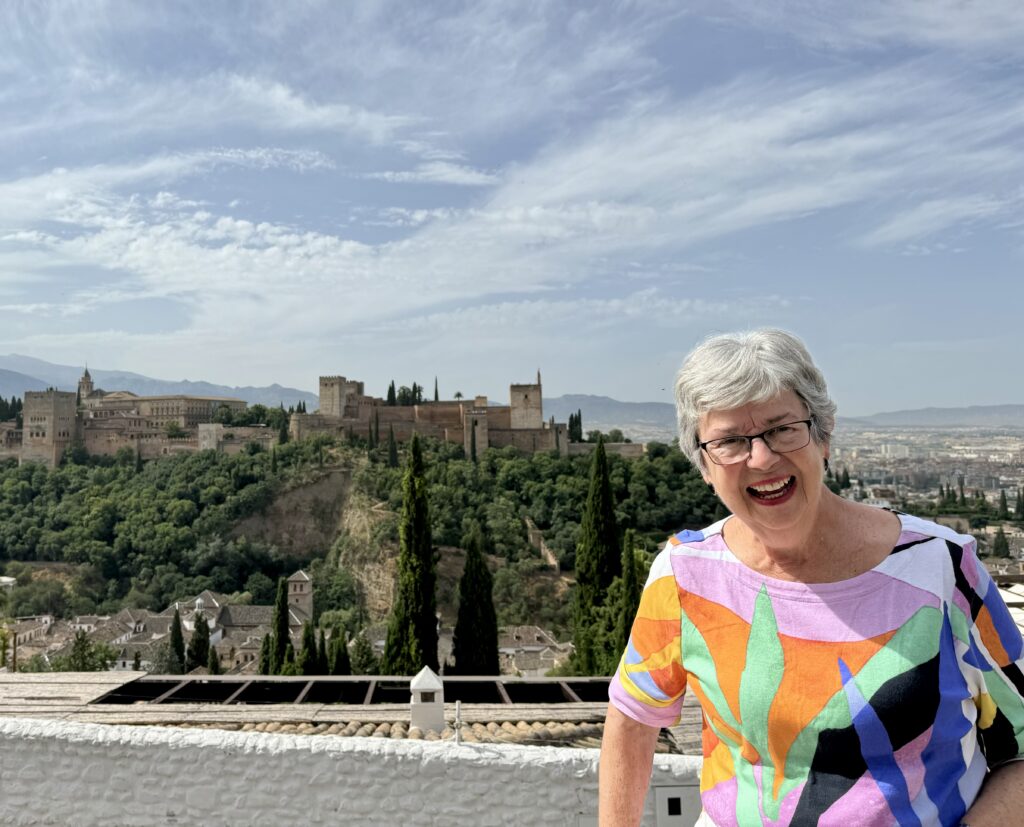
It was the song, Granada, that attracted me to this city. Written in 1932 by Mexican composer Agustin Lara, it was sung in the 60s by Frank Sinatra and in the 90s by The Three Tenors. Take a moment to listen to Spaniard Placido Domingo sing it and you, too, may feel its call. The English lyrics spell out Granada’s appeal.
Granada, I’m falling under your spell! And if you could speak, what a fascinating tale you would tell, Of an age the world has long forgotten, of an age that weaves a silent magic in Granada today.
The dawn in the sky greets the day with a sigh for Granada. For she can remember the splendor that once was Granada. It still can be found in the hills all around, as i wander along, entranced by the beauty before me, entranced by a land full of sunshine and flowers and song.
When the day is done and the sun starts to set in Granada, I envy the blush of the snow-clad Sierra Nevada. For soon it will welcome the stars, while a thousand guitars play a soft Habanera. Then moonlit Granada will live again the glory of yesterday, romantic and gay!
Another factor was an intersection in Coral Gables, Florida. Not far from the home of my son David, Granada Boulevard crosses Alhambra Circle. George E. Merrick named the streets of his planned city after Spanish cities. Over fourteen years of visiting Coral Gables, I became more curious and learned that Alhambra is the oldest part of Granada. As David, Leslie, and I planned our visit to Spain, they opted for four days at a friend’s beach house in Jávea, I chose to go to Granada instead.
Granada is the Spanish word for pomegranate. As a teen, I just loved the sweet taste of the seeds inside a pomegranate, once I had unwrapped them from their thick outer covering. In this 19-minute video, Manuel Bravo, a Spanish journalist, explains how the thick rough walls of the Alhambra, the fortress above Granada, protect the exquisite architecture inside. Here you can see the rough, reddish walls of Alhambra from the outside, followed by glimpses of its interior treasures. 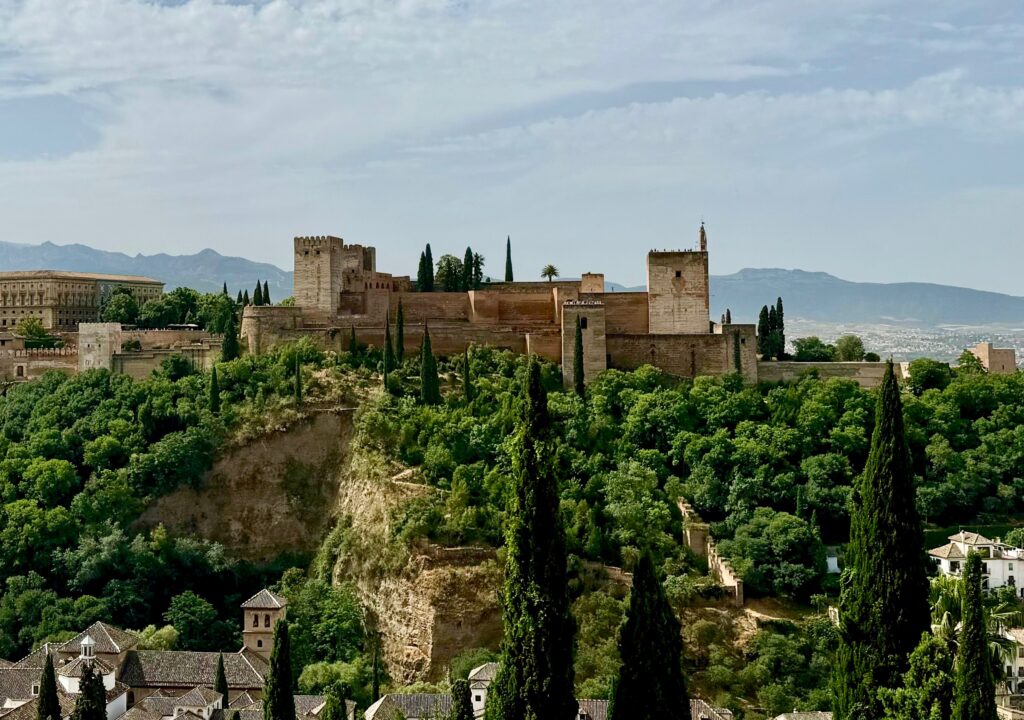
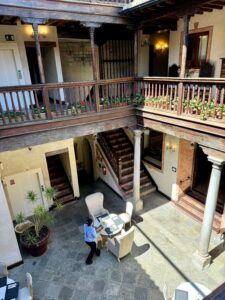 On June 13 I took a fast train from Madrid to Granada, watching as we passed olive orchards, vineyards, hayfields, ancient ruins, mountains, valleys, wind turbines, and very few animals. In Granada I checked into Hotel Casa 1800 on Plaza Nueva, a congenial place for a solo traveler. Breakfast was served each morning and tea each afternoon in the interior courtyard. There I met several interesting people who shared their impressions of Alhambra. I spent the first two days exploring the modern city of Granada, seeing the Cathedral, and watching all the activity on Plaza Nueva. Here are my impressions of Granada as recorded by my camera.
On June 13 I took a fast train from Madrid to Granada, watching as we passed olive orchards, vineyards, hayfields, ancient ruins, mountains, valleys, wind turbines, and very few animals. In Granada I checked into Hotel Casa 1800 on Plaza Nueva, a congenial place for a solo traveler. Breakfast was served each morning and tea each afternoon in the interior courtyard. There I met several interesting people who shared their impressions of Alhambra. I spent the first two days exploring the modern city of Granada, seeing the Cathedral, and watching all the activity on Plaza Nueva. Here are my impressions of Granada as recorded by my camera.
Rising above the modern city, the Alhambra and two neighboring hills form a UNESCO World Heritage Site. To the east of the Alhambra fortress, shown above, are the magnificent gardens of the Generalife, the former residence of the emirs who ruled this part of Spain in the 13th and 14th centuries. (Note; Generalife is not pronounced “general life,” but hen-e-ra-LEE-fay.) On an adjacent hill is the residential district of the Albaycín is a rich repository of Moorish vernacular architecture. All three sites are included in the World Heritage designation, though most people just call it Alhambra. Click these highlights for my Alhambra/Generalife album and my Albaycin album.
On Saturday, June 15, thinking of Lilli on her birthday, I used the ticket I’d bought months before to gain entrance into Alhambra and Generalife, a sprawling complex of buildings, ruins, and gardens that date back 900 years. Designed as a military fortress high above Granada, the Alhambra become the royal residence of the Nasrid Kingdom. Its first palace was constructed by King Mohammed ibn Yusuf Ben Nasr. That evening I returned to the Generalife outdoor stage I had seen in the morning and saw the Granada Festival’s presentation of La Sylphide by the Spanish National Dance Company. Scottish dancing in Spain! The program started at 10:30 pm, it was delightful and well done. Spotting my cane, a Festival volunteer escorted me to my seat in a wheelchair and picked me up after the performance.
When the Catholics seized Granada from the Moors in 1492, Carlos V ordered a new palace to be built in the Alhambra. The Palace of Carlos V was begun in 1527, but remained unfinished until the 1920s.. It was designed by Pedro Machuca, an architect who had trained under Michelangelo in Rome. On June 16, a concert in this palace was one that I will long remember.
The concert, part of the 73rd Granada International Festival of Music and Dance, began at 10:00 pm. Glad I had a siesta that afternoon! After a short cab ride from Plaza Nueva in Granada, I walked a few blocks uphill to the Alhambra and found myself in an open amphitheater as the sun began to fade from the sky.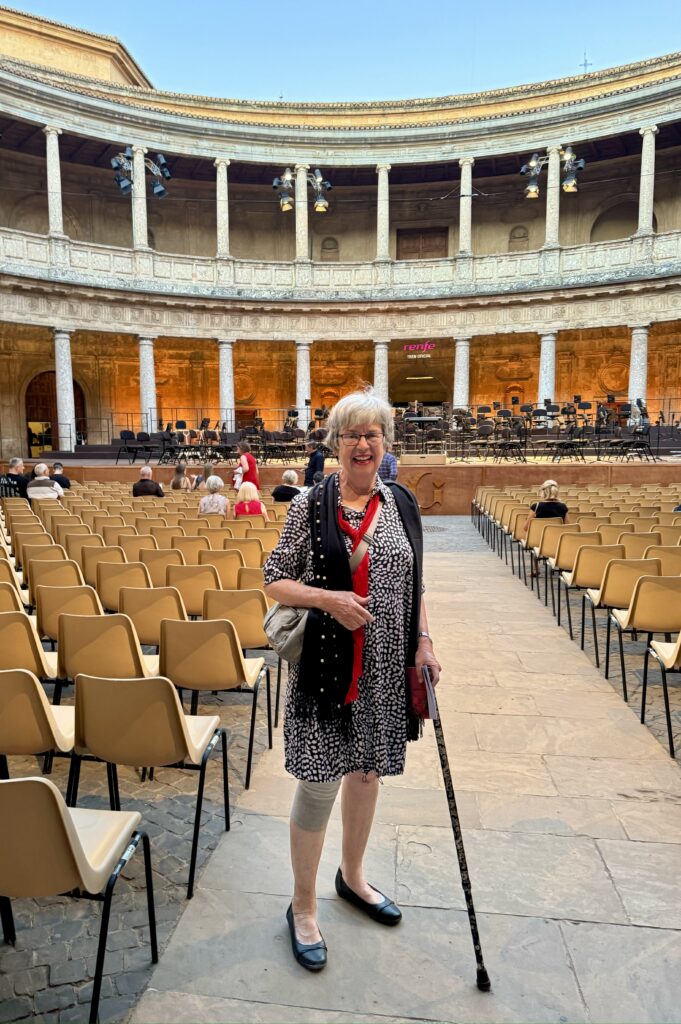
Before sunset, I read in the Spanish program notes that it was Linz, an Austrian city on the Danube, that linked two symphonies. The one by Wolfgang Amadeus Mozart was written in Linz in 1783; the other, by Anton Bruckner, who served as organist at the Linz Cathedral, was written 101 years later. When all 1,000 seats were filled, Christoph Eschenbach, now 84, the German conductor who once led the Houston, Philadelphia, and National Symphony Orchestras, walked slowly to the podium to conduct the Orquesta Sinfónica RTVE, based in Madrid.
About forty musicians, (strings, 2 oboes, 2 bassoons, 2 horns, 2 trumpets, and timpani) began to play Mozart’s No. 36, as described by The Listener’s Club:
Mozart composed the “Linz” Symphony (No. 36 in C Major) in four days. It is music which is blazing, celebratory, and festive. For the first time, Mozart begins the Symphony with a slow introduction. The stately dotted rhythms are a musical “call to order.” The introduction continues with mysterious, searching lines in which the instruments of the orchestra seem to awaken. Then, 3/4 time switches to 4/4, and we are off on the rollicking adventure of the first movement (Allegro spiritoso).
The second movement (Andante) unfolds with the lilting 6/8 rhythm of the siciliano. The graceful dance is punctuated by sudden, bold interjections by the trumpets and timpani. Throughout the movement, serene F major is clouded by turns to minor.
The Menuetto is a bright, bucolic dance, enlivened by irregular phrases which threaten to throw the music off-kilter. The trio section features a warm, canonic duet between the oboe and the bassoon.
Perhaps with a twinkle in his eye, Mozart instructed that the final movement, marked Presto, be played “as fast as possible.” Herbert Glass described this frolicking movement as “a profusion of thematic ideas, each subtly developed from its predecessor.” In the development section, a bold, arpeggiated figure rings out triumphantly, moving around the orchestra from one voice to another. Mozart’s hurriedly written masterpiece springs to life, as if with a divine spark. The occasion for which it was conceived is long forgotten; it is the music, itself, which remains.
Mozart’s symphony lasted about 30 minutes and was truly a joy to hear. During intermission, many more chairs and stands were added to the stage, plus tubas, and trombones. The orchestra seemed to double in size for Anton Bruckner’s Symphony No. 7, described here in detail by The Listener’s Club.
It was now 11:15 pm. Bruckner’s symphony not only kept me awake, but also made me listen intently. With tremolos on the strings, drum rolls on the tympani, and one startling cymbal crash, the symphony provoked many different emotions: fear, compassion, challenge, persistence, and triumph. I thought of the Schmid family I lived with in 1965 in Vöcklabruck, Austria, halfway between Salzburg and Linz. The radio of the Schmid’s Gasthaus always played the music from the ongoing Salzburg Festival. Now here I was 60 years later in Spain, listening to music composed composed by Austrians 240 and 140 years ago! As stars began to emerge above the palace’s open roof, fond memories of Family LePechon merged with the sounds of Austria’s rich musical heritage. For me, it was-a holy experience.
While I missed my traveling companions, especially their expertise in Spanish, I loved getting to just be myself in Granada. The weather was perfect, the architecture and gardens stupendous, and the music richly rewarding. I love meeting other Alhambra enthusiasts, having a massage in a Arabian bathhouse, and watching brides process and people dance in the square near my hotel. GRANADA! The song rings in my heart!
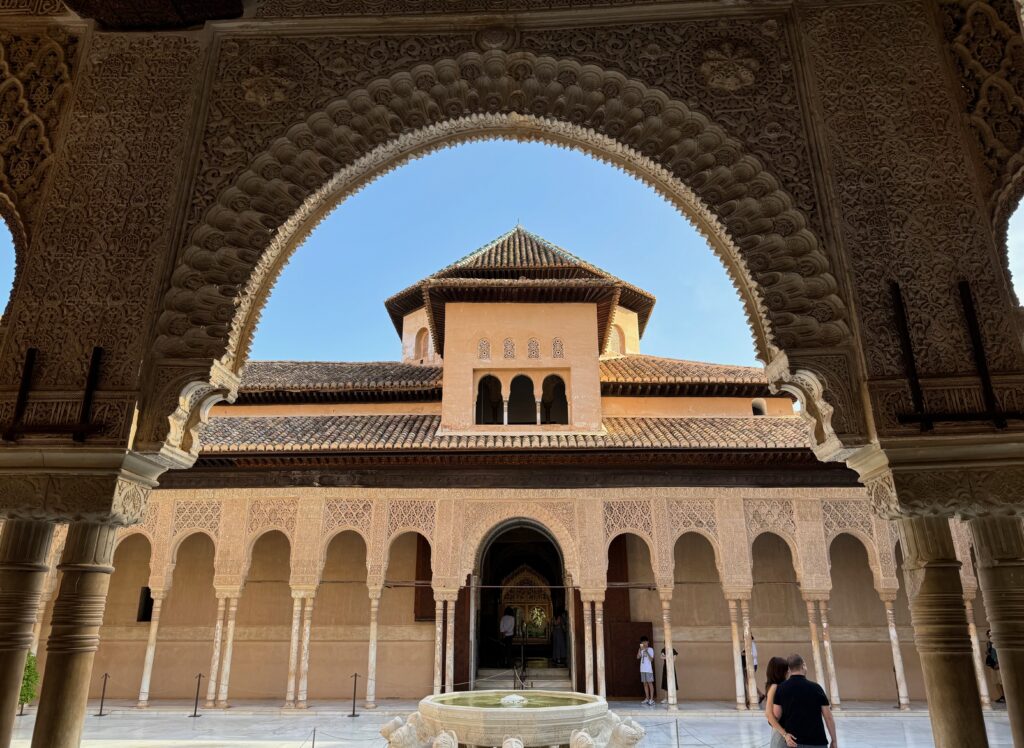
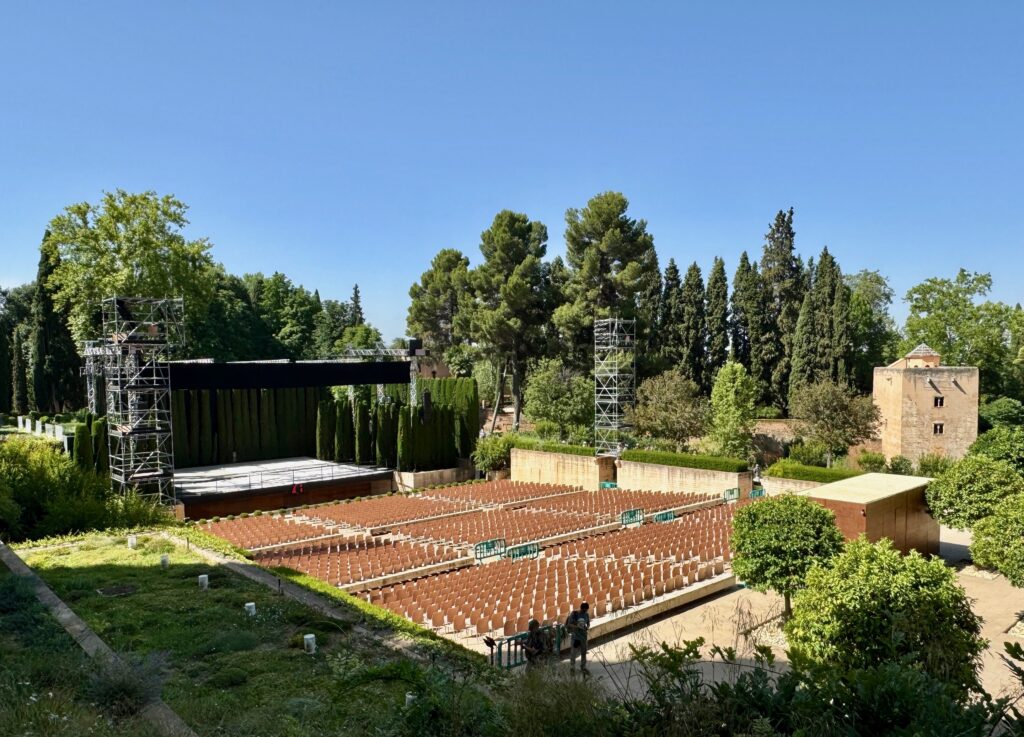
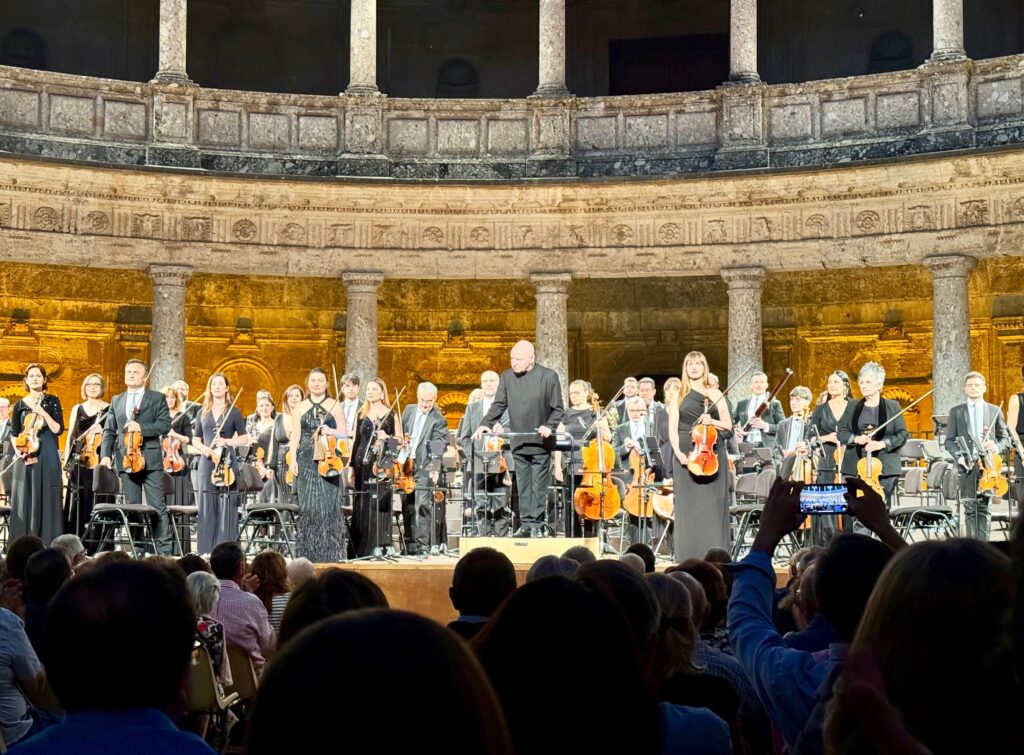
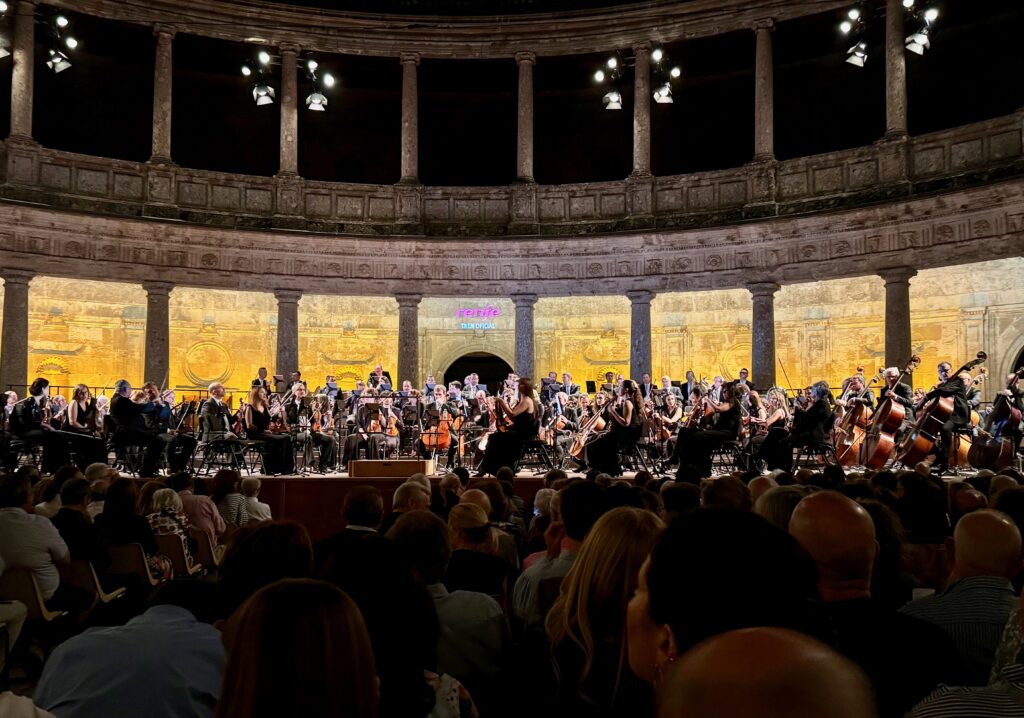
Leave a Reply